2019 - 2020 dissertation fellows
- Tiffanie Clark, Romance and Arabic Languages and Literatures
- Emily Rose Cole, English and Comparative Literature
- Amanda Corris, Philosophy
- Zuopeng Fu, Mathematical science
- Orlaith Heymann, Sociology
- Evan Johnson, History
- Igor Kovac, Political Science
- Beau Sauley, Economics
- Anna Senuysal, German Studies
- Anne Delano Steinert, History
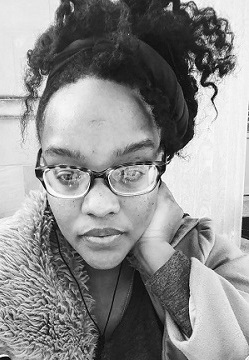 Central Americans in Movement:
Central Americans in Movement:
A Diasporist Revival of Poesía Comprometida
Tiffanie Clark, Romance and Arabic Languages & and Literatures
Considering Juan Flores’ affirmation that “for many Latinos in the U.S., migration is confounded with life itself” (2000), this dissertation analyzes the poetry of Ilka Oliva Corado (Guatemala, 1976), Cynthia Guardado (United States, 1988), Alexandra Lytton-Regalado (El Salvador, 1974), and Javier Zamora (El Salvador, 1990); four emergent sociopolitical poets of Central American descent in the U.S. diaspora. Clark’s hypothesis is that different modes and conditions of diaspora affect which sociopolitical aspects these poets choose to approach and how they approach them. She employs the concepts of deterritorialization and hybridity (García Canclini, 1990) to study the language they use and how they merge Central American and U.S. culture, history, and current events to produce diverse sociopolitical critique and commentary. Within this main framing hypothesis, her study also seeks to understand what thematic and stylistic elements they have inherited from leading Central American activist poets writing during the 1950s through the 1980s and in what ways does their work diverge from this literary tradition due to stronger representations of psychological, physical, and gender borders (Anzaldúa, 1987). The ultimate goal of this dissertation is to be the first to offer a comprehensive analysis of the inner workings of twenty-first century Central American poets of the U.S. diaspora who—like those Central American activist poets of the twentieth century— are using poetry as a political weapon of light for social change both “home” and “abroad.”
3eb9e67419f74b7589c272c95451f374.png?sfvrsn=9fa1bf04_0) Fissure
Fissure
Emily Rose Cole, English & Comparative Literature
Fissure is a book-length poetry manuscript whose main poetic threads investigate how disability theory can be applied to feminism, popular culture, and ecopoetics. Fissure will trace three major threads, one relating to the speaker’s chronically ill body, one related to the specific dangers faced by women in contemporary America, and one related to the hazards of hydraulic fracturing by documenting the challenges faced by the residents of a small town in Pennsylvania after fracking was approved there. Disability theory is applied to unite these major themes
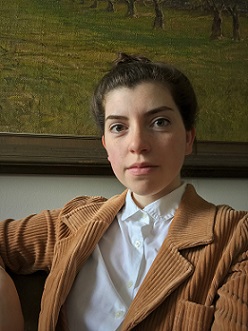 Organism-Environment Codetermination: The Biological Roots of Enactivism
Organism-Environment Codetermination: The Biological Roots of Enactivism
Amanda Corris, Philosophy
Where in nature do we find cognition? I attempt to answer this question by identifying four principles that make up a biological theory of cognition. Organisms qualify as cognizing systems when they are self-organizing, undergo structural coupling, are mutually specified with their environments, and actively engage in sense-making. These four principles are central to an enactive approach to cognition, on which organisms are said to ‘bring forth’ or ‘enact’ a world. They are also in line with the identifying features of the extended evolutionary synthesis (EES) research program in evolutionary biology. In my dissertation, I present a theory of biological enactivism that identifies the kinds of systems that qualify as cognizing systems and explains how the features of those systems play a causal role in guiding development and evolution. I argue that this theory builds on the EES in such a way that provides an account of cognition as a process that drives evolution.
8207e2bace7647c3aa80ce305d00f22f.png?sfvrsn=4efb583b_0) Topics on Fractional Stable Processes Indexed by Manifolds
Topics on Fractional Stable Processes Indexed by Manifolds
Zuopeng Fu, Mathematical Science
My research has been focusing on stochastic processes, from both theoretical and computational aspects, more specifically on stable processes and random fields. In the first project of my dissertation, a new family of stable processes indexed by manifolds have been introduced, which are special cases of stable processes with Chentsov representation. We established a limit theorem for these manifold-indexed stable processes based on a variation of so-called Karlin model. As the second project, currently we are seeking an efficient simulation scheme for large-scale manifold-indexed stable processes. As an extension of stable processes, we would like to develop the theory for Karlin max-stable processes and in particular provide corresponding efficient large-scale simulation algorithms. Furthermore, limit theorems for other variations of Karlin model will be investigated.
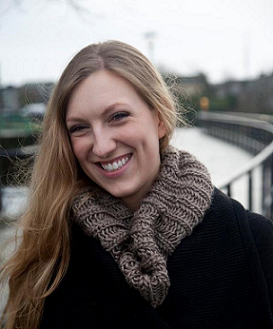 Autonomy & Constraint: Sex Educators in Schools
Autonomy & Constraint: Sex Educators in Schools
Orlaith Heymann, Sociology
Sex education is America’s solution to an ‘epidemic’ of poor sexual health, but the curricula and approach are hotly contested at every level of society. While policymakers, school boards, and parents attempt to exert influence over sex education policies, sex educators must decide what and how to teach youth about sexuality. Sex educators may be the ‘boots on the ground’ but they are not always obedient foot soldiers. Even when given mandated curricula, sex educators can find creative ways to repurpose sex education for their students. Little research shows what circumstances or characteristics allow for such action or how sex educators negotiate gaps between curricula and what they believe their students need. Further, sex educators are not a homogenous group – while some are full-time, certified sex educators who teach in a variety of settings, others are school teachers who teach sex education as one part of their job. Scant research describes sex education from sex educators’ perspectives and no studies have compared the experiences of community and teacher sex educators in schools. This study will provide needed evidence to address these gaps and can inform advocacy and professional organizations that train and support sex educators about the factors that facilitate or constrain their autonomous teaching decisions.
This qualitative study will include interview data from 50 school-based sex educators who work as community educators and teachers. I will recruit sex educators from sex education and reproductive health conferences, professional directories, community health organizations, schools, and professional teacher associations. The interviews will describe the current state of teaching school-based sex education from the perspective of sex educators, particularly the challenges and opportunities they experience as well as their strategies to provide the sex education they believe their students need. I will compare sex educator experiences by assessing how sex educators’ experiences are shaped by identity and context, comparing community and teacher sex educators to identify how differences in training, employment, and years of experience structure these roles. I will also consider how sex educators’ personal characteristics (race, class, gender, age, and sexuality) and structural contexts such as location and school characteristics (size and student body) shape their classroom experiences. Finally, I will identify factors that enable or constrain sex educators’ creativity and agency by identifying personal, professional, or structural factors that influence sex educators’ teaching, particularly factors that shape sex educators’ sense of curricular autonomy.
84c60c8bc7944519ad54ffc59aa956b6.png?sfvrsn=3e8f8c02_0) Coexistence in the Face of War: Civil-Military Relations in Brandenburg During the Thirty Years War (1618-1648)
Coexistence in the Face of War: Civil-Military Relations in Brandenburg During the Thirty Years War (1618-1648)
Evan Johnson, History
My dissertation probes the experience of war within the Hohenzollern territories of the Holy Roman Empire by articulating the complex relationship between civilians and soldiers during the Thirty Years War. I seek to complicate the traditional narrative of overwhelming catastrophe and hatred between these two groups which has long dominated the history of the war. The first-hand accounts from the period present ample evidence of deep seated antagonism between soldiers and local populations and the violence and destruction that resulted. However, I argue that the correspondences and chronicles of the period also reveal the relationship was not reducible to a simple power binary—military power and agency, civilian impotence and victimhood. Rather, the interactions between civilians and soldiers, and between those groups and military and civilian authorities, can better be described as existing along a continuum existence and in some cases driven by what I call a quest for normalcy. By engaging with sources from several locations in the Brandenburg territory I will be able to conduct a comparative analysis of firsthand accounts of the war and understand this continuum within the context of several considerations: the variety of strategies for pursuing normalcy in both civilians and, to a less accessible degree, soldiers’ lives during the war; whether the community’s size or distance from the electoral court mattered in facilitating or limiting civilians’ options in response to military pressures; the role of confessional and geopolitical considerations in shaping civil-military interactions; and finally, whether we can identify change on these fronts over the course of the war—an element made particularly difficult given source limitations and the varied impact of war across the region over time.
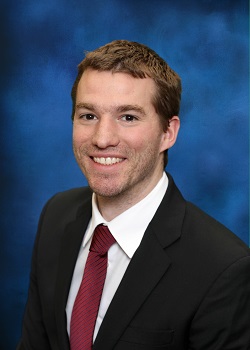 Pervasive Hegemony Theory
Pervasive Hegemony Theory
Igor Kovac, Political Science
Most International Relations literature suggests that when power becomes imbalanced, such a situation will be corrected—hegemony cannot continue over time. However, history offers us several examples of hegemonic endurance, e.g. Ancient Rome, Ming China. So far scholars have offered four explanations for such enduring hegemony (Coercive Hegemony, Cooperative Hegemony, Cultural Hegemony, and Opportunist Hegemony), with a common mechanism: ineffective balancing. Namely, the hegemon has the capacity to put balancing at bay using different strategies. However, I argue that this is an incomplete picture, as the nature of the US hegemony displays different characteristics what these explanations assume. Namely, although US relative power is declining, its global economic network centrality is not. Thus, I developed a new theory – Pervasive Hegemony − which is based in the idea of network relations distinguished by a ‘buy-in’ dynamic. The ‘buy-in’ denotes a behavior of non-hegemonic states that reinforce the hegemony due to their selfish national interests, risk aversion, and autonomy seeking. In pursuing my argument, I use both quantitative (Network Analysis and Time Series) and qualitative methods (case study of the end of Bretton Woods System and the long depression 1873-1896).
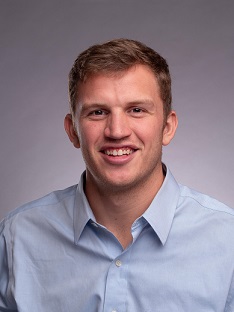 The Effect of School District Levies on Communities
The Effect of School District Levies on Communities
Beau Sauley, Economics
This research examines how school levies affect multiple components of their communities. The goal is to examine home prices, as well as population parameters, such as percent of the population which are children, the percent households which have children, the child poverty rate, and the change in the total number of people in the population. Each of these examinations will be executed using a spatial regression discontinuity design developed by Sauley and fellow Taft dissertation fellowship recipient, Gary Cornwall.
Aesthetic Deviation and the Depiction of Madness in German Drama: 1770-1970
Anna Senuysal, German studies
A vast body of research has been conducted on changing discourses on madness and their manifestations in German literature. However, what is mostly excluded from these examinations is a close analysis of the way literary texts portray madness on a formal level, what the aesthetic frameworks of these depictions look like, and to what extent texts deviate from these formal-aesthetic frameworks in their depiction of what is broadly understood as ‘madness’. This research desideratum forms the basis of the given dissertation project.
Phenomena like insanity, madness or delusion inherently question the perception of objective reality and dissolve the borders of the (in-)comprehensible and (non-)representable. Hence, their portrayal in literary texts poses questions of whether and how these phenomena and the breaking-apart of reality can be captured and depicted on a linguistic and formal level. This is particularly interesting with regard to theatre texts, which are often bound to specific aesthetic conventions, yet also need to find ways to make these intangible phenomena ‘representable’ in a literal sense.
The project will specifically look at four dramatic texts: Johann Wolfgang von Goethe’s Götz von Berlichingen (1773), Heinrich von Kleist’s Prinz Friedrich von Homburg (1810), Gerhart Hauptmann’s die Ratten (1911) and Peter Weiss’Hölderlin (1970). It will show how all of these works stem from pivotal points of development in literary history and discourses on madness. Moreover, it will closely analyze the intersection of content and form and show how the texts as paradigmatic examples exhibit deviant formal-aesthetic techniques as a means of representing the intangible.
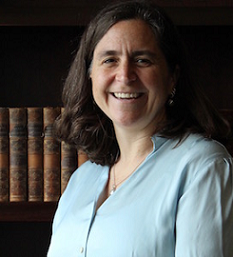 Standing Right Here: The Built Environment as a Tool for Historical Inquiry
Standing Right Here: The Built Environment as a Tool for Historical Inquiry
Anne Delano Steinert, History
This project explores methodological questions within professional academic history regarding the types of sources historians use and impacts source type has on inquiry. Steinert specifically poses the question, "how does historical inquiry change when historians use the built environment as their foundation for inquiry?" She will demonstrate that starting with the built environment allows historians to ask new kinds of questions and discover histories beyond those available in text-based records. Because buildings, cities, and streetscapes tell the story of a broad range of people who lived in and used them, these sources will shed light on the stories of lesser known pasts and provide historians with a valuable set of tools. Steinert's dissertation will model the use of the built environment in a series of chapters on components of the built world--site, location, use, form, and materials--each of which will consist of an article-length inquiry into a Cincinnati-based historical question. In additional to these methodological models, Standing Right Here will link each example to a distinct method of public consumption. Put simply, the exploration within each chapter will be presented to the public in some way. Each of these vehicles for public consumption--scholarly publication, popular publication, exhibition, website, and lecture series-- will be evaluated within the dissertation for effectiveness and relevance to a non-academic audience. Steinert believes that beyond providing historians with new tools for inquiry, the accessibility and immersive nature of the built environment make it an idea vehicle to make history relevant to a broad audience. This connection to a broader public is necessary for the future health of the field.
PAST DISSERTATION FELLOWS: